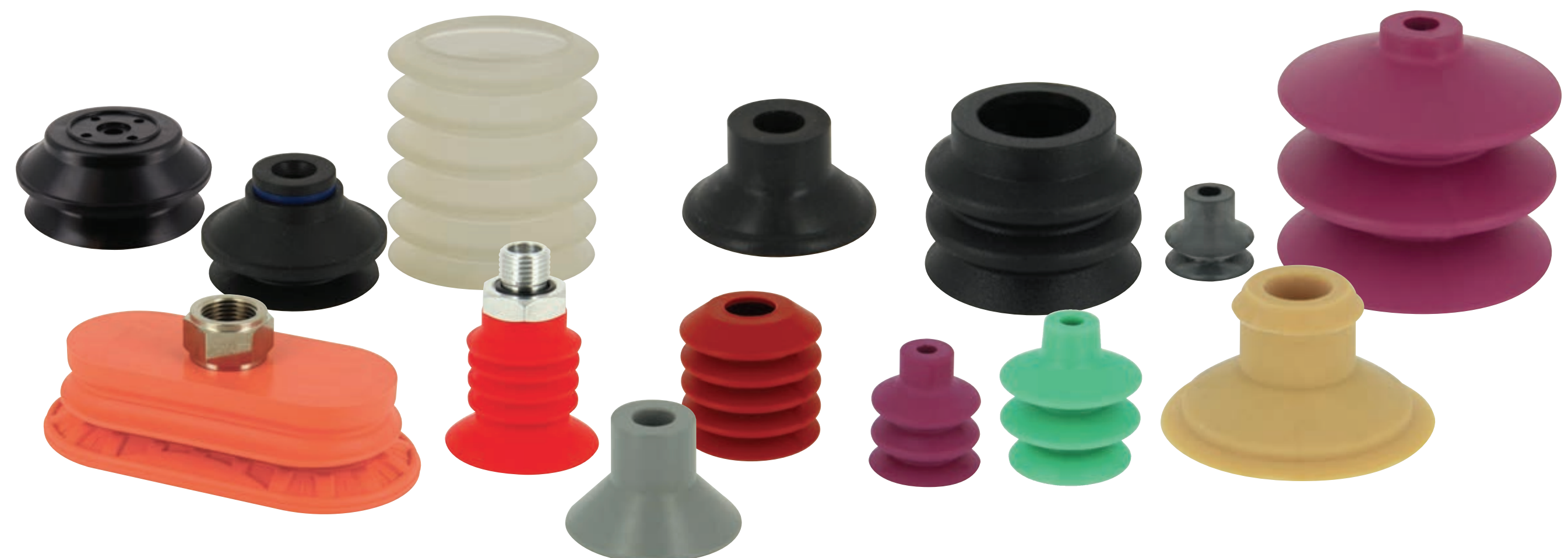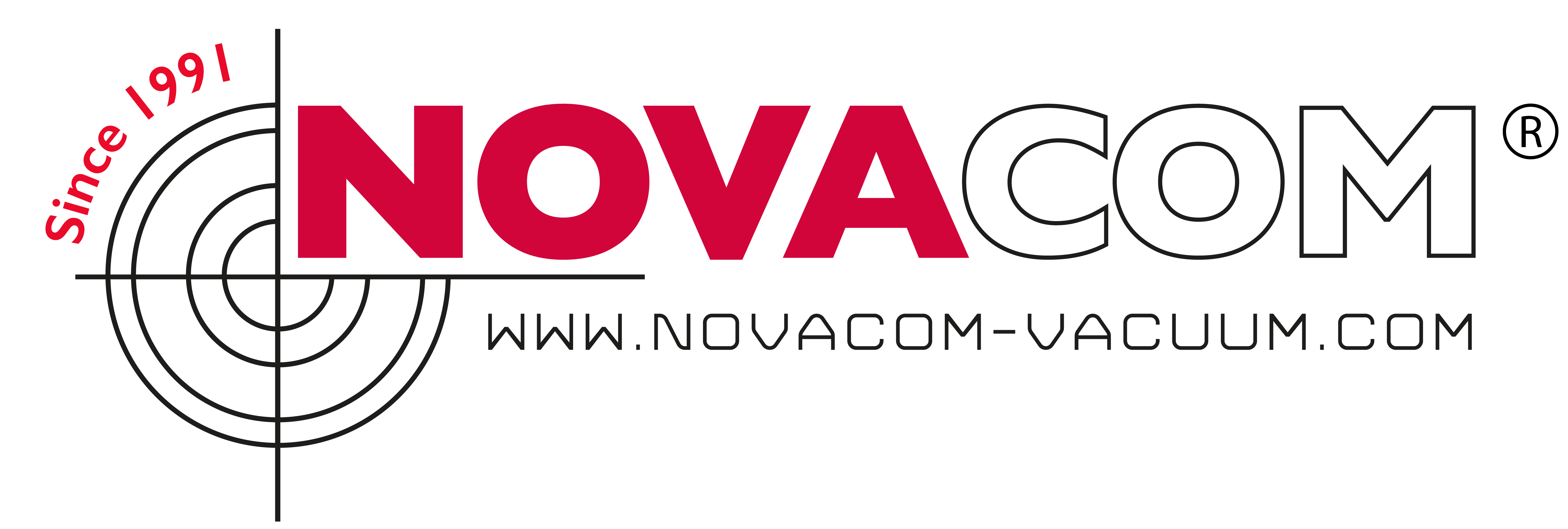Guide pour bien choisir sa ventouse...

OPERATING PRINCIPLE
Vacuum gripping ensures the quick handling of a multitude of fragile or complex shaped objects such as cardboard, paper or pastries. It is done using one or more suction cups integrated into an automated device. The suction cup allows for the link between the piece to be grasped and the gripping system. The difference between the vacuum created inside the suction cup and atmospheric pressure will allow the suction cup to adhere to an object. This pressure difference is obtained by connecting the suction cup to a vacuum generator, also called a venturi or vacuum pump.
NOVACOM develops and manufactures a complete range of suction cups, flat, with blowholes, oblong, rectangular, etc. to concretely meet the needs expressed by our customers. More than 5,000 references are offered in a wide choice of materials (natural rubber, Nitrile, food grade silicone, vinyl, etc.)
Our range is complemented by other components necessary for good vacuum gripping: inserts, supports, spring assemblies and various accessories.
GENERAL SELECTION CRITERIA
In order to choose the right suction cup, several parameters must be taken into consideration:
• The shape of the object to be gripped: flat, curved, cylindrical, wavy,...
• The material of the object to be gripped: porous, deformable, rigid, flexible, or fragile, ...
• The state of the surface of the object: abrasive, granular, smooth, ...
• The appearance of the object: oily, dusty, dry, viscous, humid,...
• The weight of the object,
• The temperature of the object,
• The orientation of the grip: horizontal, vertical, angular, difference in levels, ...
• The type of grip: manipulation, lifting, unstacking objects, holding, ...
• The available surface,
• Cycle times.
COMPREHENSION STRENGTH
The gripping force of a suction cup varies depending on its shape, material, and internal volume. In this catalog, the gripping force of suction cups is a real force at 90% vacuum calculated with a safety factor of 2 for horizontal grip and 4 for vertical grip (see diagrams on the next page). It is expressed in Newtons.
DIFFERENT SHAPES
The suction cups are generally distinguished as flat, bellows, oblong, rectangular, and conical. Each shape has its own advantages. For example, a flat suction cup would be chosen for flat or slightly curved surfaces, while a bellows suction cup would be used to handle irregularly shaped or differently sized surfaces. Find the details of the different shapes of suction cups.
ARROW
The suction cup arrow is the difference between the rest position and the vacuum position. In this catalog, this value is indicated on each suction cup plane by the letter "F".

The theoretical gripping capacity of a suction cup is expressed in Newtons and is calculated using the following formula:
Force (N) = Inner surface area of the lip (cm2) x 0.9 (90% vacuum) x 9.81 (gravity)
To ensure optimal safety of use and to take into account movements and accelerations, the forces of the suction cups indicated in this catalog include a coefficient of 2 for horizontal grip and 4 for vertical grip.
The internal volume of the suction cup determines the total volume of the gripping system. The larger the internal volume of the suction cup and the circuit, the higher the flow rate will need to be. Therefore, a larger venturi should be chosen.
HOW TO DETERMINE YOUR SUCTION CUP?



 Italian
Italian French
French



